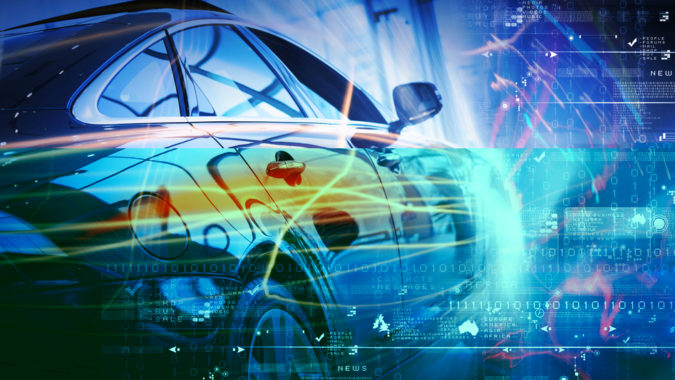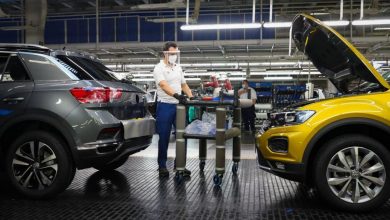
Automotive Industry Puts the Pedal to the Metal with A
For the automotive industry, there is a new turbocharged engine under the hood: artificial intelligence solutions driven by high performance computing systems.
For players in the automotive industry, every day is a race against competitors. The goal is to be first in product quality and performance, first in manufacturing efficiency, and first to market with technical innovations. Efforts like these are increasingly driven by artificial intelligence solutions and high performance computing systems that are built to churn through massive amounts of data at lightning-fast speeds.
The growing importance of AI to the industry is underscored by the substantial investments the industry is making in new technologies. To that end, the research firm Tractica forecasts that the market for automotive AI hardware, software and services will reach $26.5 billion by 2025, up from $1.2 billion in 2017.[1]
While significant amounts of this AI spending will be directed to the development of autonomous driving solutions, the use cases for AI in the industry are far broader. They span the wide range of product development, manufacturing and business processes — from design and prototyping to sales and marketing.
Let’s look at some of the ways that automobile manufacturers are using AI to deliver better vehicles and a safer, more efficient driving experience while streamlining processes to contain costs.
Driver assistance and safety
With today’s most advanced vehicles, AI systems alert drivers to hazardous road conditions, monitor blind spots in the driver’s view, assist with steering, and take automated actions to help vehicles avoid accidents and dangerous situations.
As Tractica notes, “The automotive industry is among the industries at the forefront of using AI to mimic, augment, and support the actions of humans, while simultaneously leveraging the advanced reaction times and pinpoint precision of machine-based systems.”1
Tractica also points out that AI can also be used to make life in a motor vehicle more convenient and safer. One example: In-car assistants, driven by natural language processing and machine learning techniques, allow a vehicle’s systems to respond to voice commands and infer what actions to take without human intervention.
Fully autonomous vehicles
Fully autonomous vehicles, or AVs, are the future. More than 33 million AVs will be sold globally in 2040, according to forecasts from business information provider IHS Markit.[2] These smart cars and trucks can drive themselves with little to no involvement from human drivers, and manufacturers and their technology partners are in a tight race to develop the AI systems that will put them on the road.
The systems at the heart of autonomous vehicles incorporate a wide range of AI-enabled technologies. These features include deep learning neural networks, computer vision, natural language processing and gesture-control features. Collectively, features like these provide the brains for vehicles that can safely drive themselves, with or without a human driver on board.
Connected vehicles
AI is an essential technology for connected vehicles. For example, AI can watch for and predict component failures, so vehicle manufacturers and owners can work proactively to avoid problems. It can also provide drivers with location‑based information and personalized advertising to help them find the things they need. Similarly, AI-enabled systems in connected vehicles can send driving and accident data to insurance companies, which might offer incentives for safe driving habits.
Manufacturing
AI enables smart applications that span the automotive manufacturing floor. Automakers can use AI-driven systems to create schedules and manage workflows, enable robots to work safely alongside humans on factory floors and assembly lines, and identify defects in components going into cars and trucks. These capabilities can help manufacturers reduce costs and downtime in production lines while delivering better finished products to consumers.
A study by McKinsey Global Institute highlights some of the unique advantages of using AI to inspect automotive components and products. In one of these advantages, AI systems get better over time at identifying defects. “The AI system constantly learns to improve its analysis based on feedback,” McKinsey notes. “Using these methods, AI-powered hardware can visually inspect and provide superior QC on various products, such as machined parts, painted car bodies, textured metal surfaces and more.”[3]
Supply chain
In today’s global economy, automotive manufacturers have complex supply chains that span many geographies. Any glitches or breakdowns in the supply chain can be extremely costly. With AI, manufacturers can gain greater control over their supply chains, including processes for planning, logistics, inventory tracking and management. For example, AI-driven systems can predict complex interactions between production units and automate requests for parts, labor, tools and repairs.
Sales and marketing
Global manufacturers can use AI-driven systems to more accurately predict sales volumes for different models of cars in different regions and countries. Some auto makers are already on this path. Volkswagen, for example, uses machine learning to predict sales of 250 car models across 120 countries, using a model that incorporates economic, political and meteorological data.[4]
A case study: McLaren Technology Group
Formula 1 racing is the ultimate human-machine partnership. Every driver is like an engineer, making split-second decisions based on the data from hundreds of sensor that generate thousands of pieces of information. And it’s all powered by HPC and AI solutions.
That’s the way it is at McLaren Technology Group, which counts on an AI system and Dell EMC-supported high performance computing environment, with Dell EMC PowerEdge servers with Intel® technologies inside, to keep its cars out in front.
“Data is the foundation of making the cars go faster,” says Paul Brimacombe, head of enterprise architecture at the McLaren Technology Group, in a Dell Technologies case study. “There are around 300 sensors on a Formula One car, and we collect around 100 gigabytes of data on each car during a race weekend. That data needs to be accessed in real time by the engineers, both trackside and in mission control, in order to make crucial decisions about the cars such as when to make a tire change.”
With its HPC-driven AI solution, McLaren can more easily use massive amounts of data to squeeze the very highest levels of performance out its racing machines.
“At trackside, it’s important that we have our telemetry data coming in at maximum speed, because we can see things like a gear change in the data before it’s actually heard on the track,” Brimacombe says. “We use machine learning and analytics to dig into that data and optimize the performance of every component in the car to get the best racing results possible. This data is also a valuable tool in designing future cars.”[5]
Looking ahead
For the automotive industry, AI is both the present and the future. A study by the McKinsey Global Institute predicts that, over the next two decades, AI will enable autonomous vehicles to become mainstream while transforming most aspects of the auto-manufacturing process, from research and design to project management and business support functions.
“These changes are fast approaching,” the firm notes. “Manufacturers should understand what the sources of value really are and then start developing the necessary analytical capabilities and establishing an AI-ready culture.”[6]
For organizations on this path, there’s a whole lot of good news on the technology front. The HPC systems that drive AI workloads are becoming more affordable, more scalable and easier to deploy. These advances create an ideal environment for the automotive sector to dive more deeply into AI-driven systems and processes.
Font: HPC Wire





